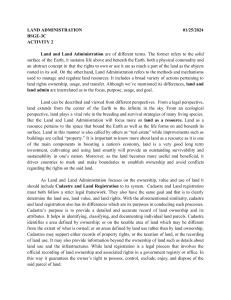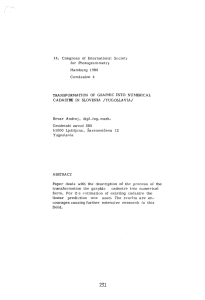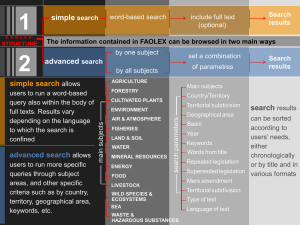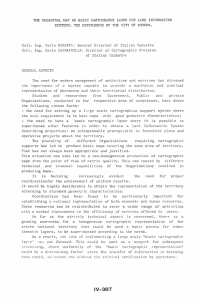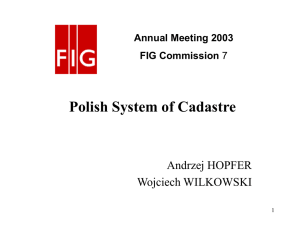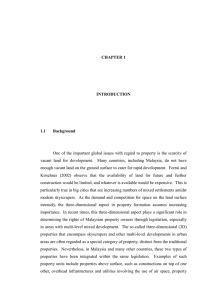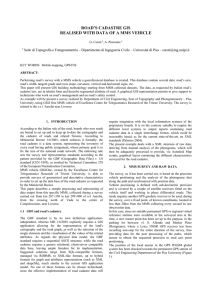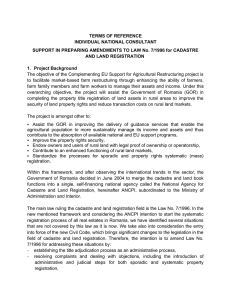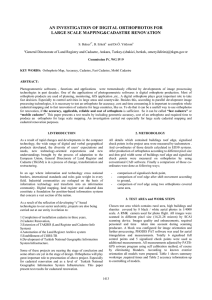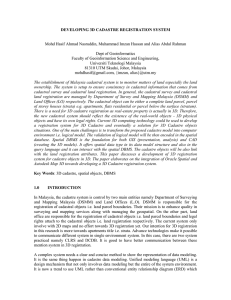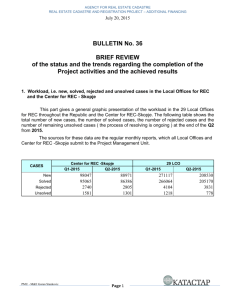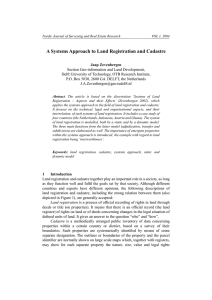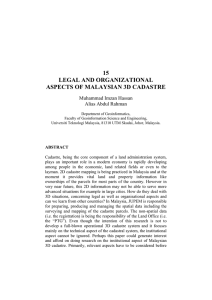Impact of Spatial Data Infrastructure Requirements on Cadastral Data
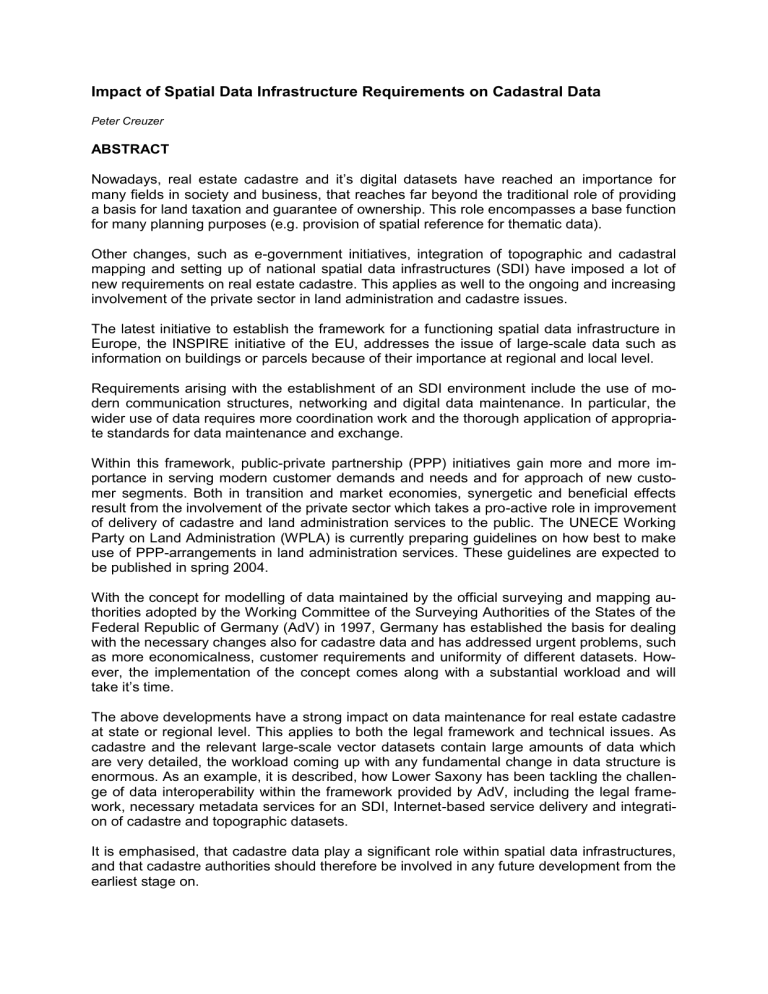
Impact of Spatial Data Infrastructure Requirements on Cadastral Data
Peter Creuzer
ABSTRACT
Nowadays, real estate cadastre and it’s digital datasets have reached an importance for many fields in society and business, that reaches far beyond the traditional role of providing a basis for land taxation and guarantee of ownership. This role encompasses a base function for many planning purposes (e.g. provision of spatial reference for thematic data).
Other changes, such as e-government initiatives, integration of topographic and cadastral mapping and setting up of national spatial data infrastructures (SDI) have imposed a lot of new requirements on real estate cadastre. This applies as well to the ongoing and increasing involvement of the private sector in land administration and cadastre issues.
The latest initiative to establish the framework for a functioning spatial data infrastructure in
Europe, the INSPIRE initiative of the EU, addresses the issue of large-scale data such as information on buildings or parcels because of their importance at regional and local level.
Requirements arising with the establishment of an SDI environment include the use of modern communication structures, networking and digital data maintenance. In particular, the wider use of data requires more coordination work and the thorough application of appropriate standards for data maintenance and exchange.
Within this framework, public-private partnership (PPP) initiatives gain more and more importance in serving modern customer demands and needs and for approach of new customer segments. Both in transition and market economies, synergetic and beneficial effects result from the involvement of the private sector which takes a pro-active role in improvement of delivery of cadastre and land administration services to the public. The UNECE Working
Party on Land Administration (WPLA) is currently preparing guidelines on how best to make use of PPP-arrangements in land administration services. These guidelines are expected to be published in spring 2004.
With the concept for modelling of data maintained by the official surveying and mapping authorities adopted by the Working Committee of the Surveying Authorities of the States of the
Federal Republic of Germany (AdV) in 1997, Germany has established the basis for dealing with the necessary changes also for cadastre data and has addressed urgent problems, such as more economicalness, customer requirements and uniformity of different datasets. However, the implementation of the concept comes along with a substantial workload and will take it’s time.
The above developments have a strong impact on data maintenance for real estate cadastre at state or regional level. This applies to both the legal framework and technical issues. As cadastre and the relevant large-scale vector datasets contain large amounts of data which are very detailed, the workload coming up with any fundamental change in data structure is enormous. As an example, it is described, how Lower Saxony has been tackling the challenge of data interoperability within the framework provided by AdV, including the legal framework, necessary metadata services for an SDI, Internet-based service delivery and integration of cadastre and topographic datasets.
It is emphasised, that cadastre data play a significant role within spatial data infrastructures, and that cadastre authorities should therefore be involved in any future development from the earliest stage on.
